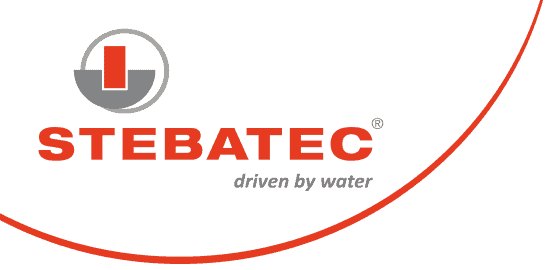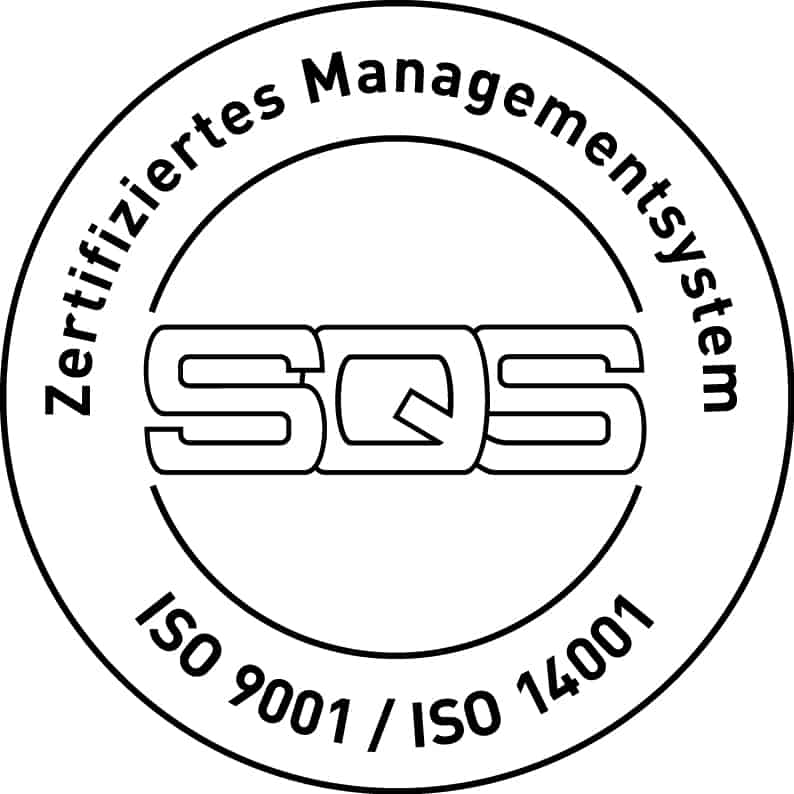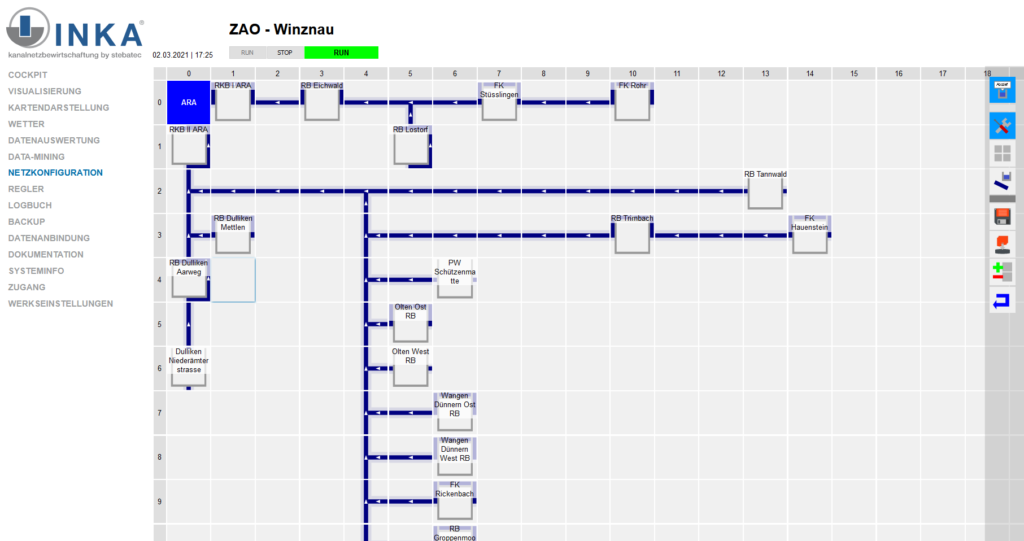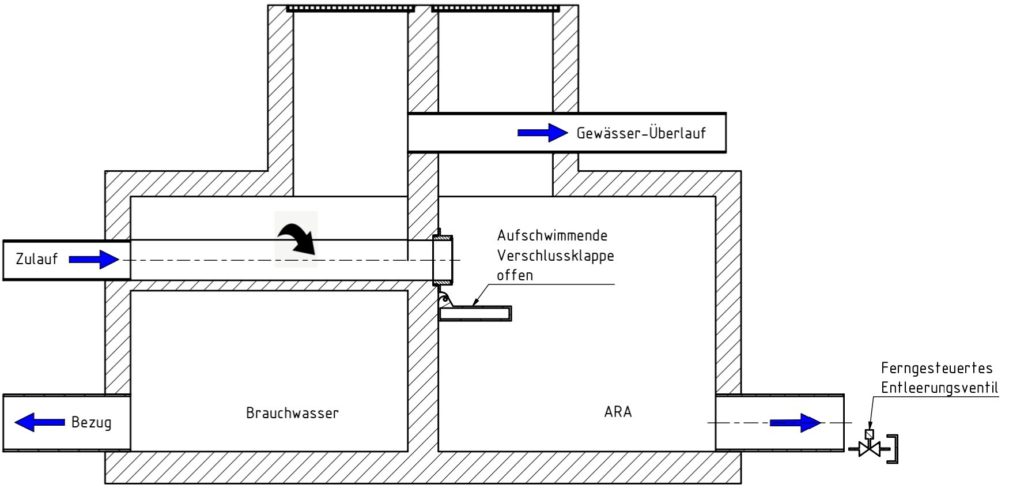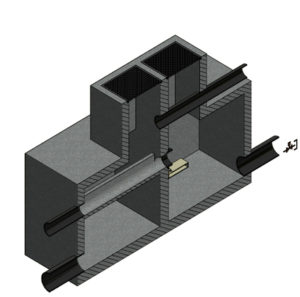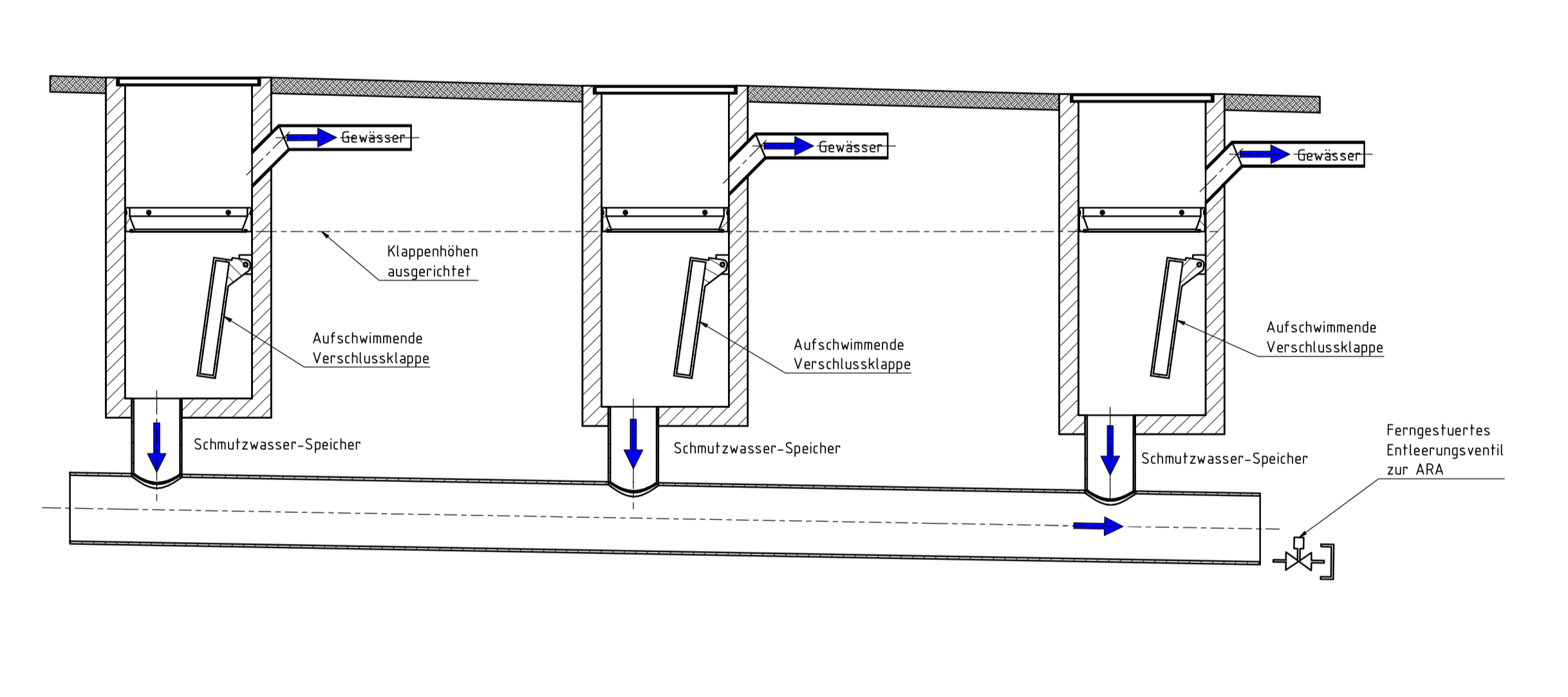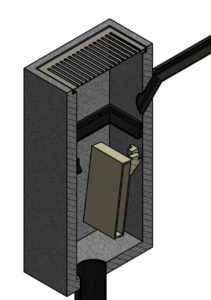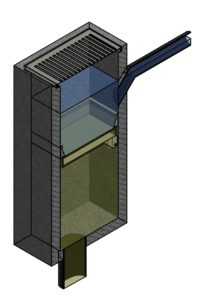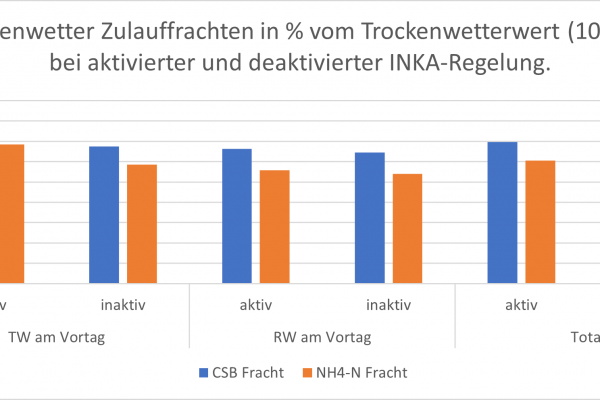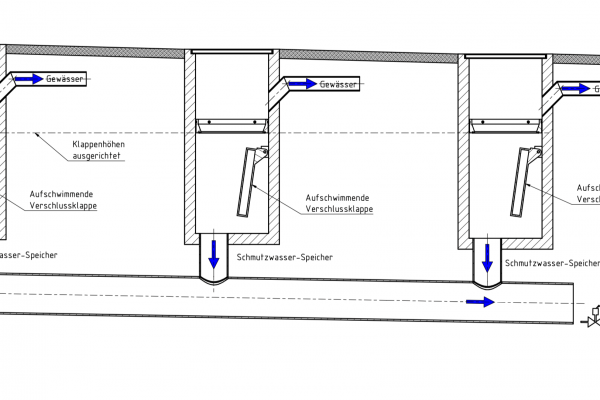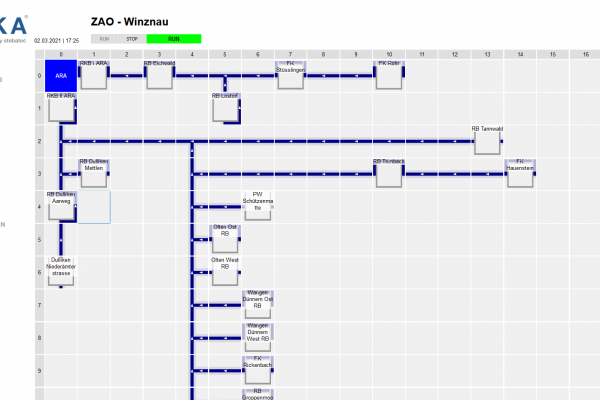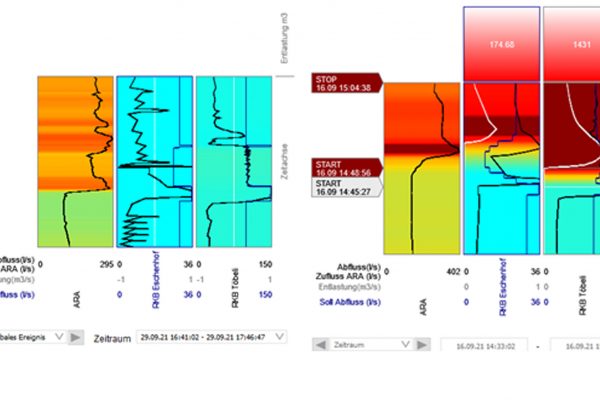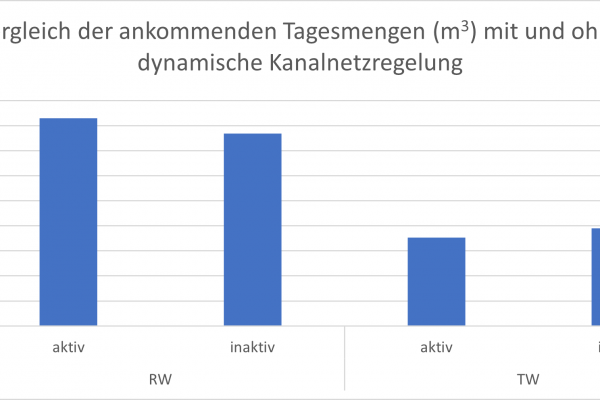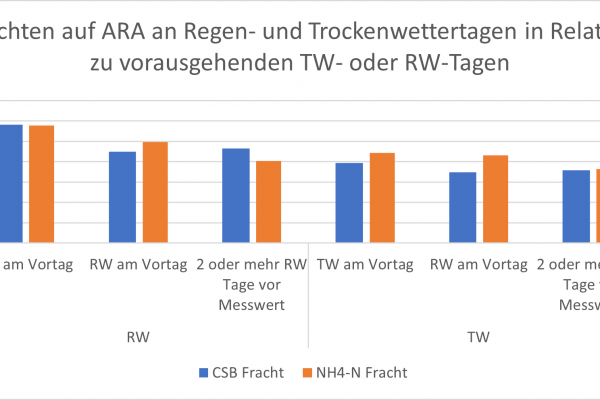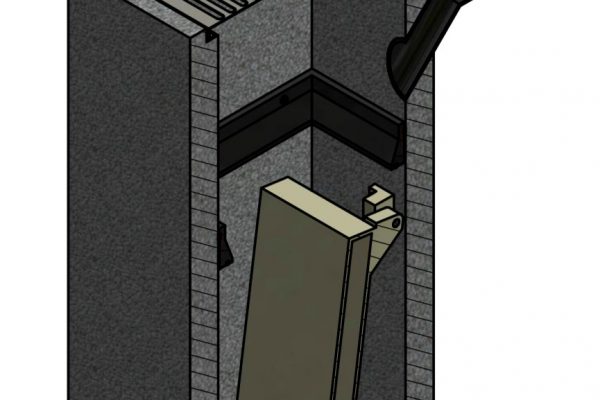The increasing digitalisation of sewer networks and the possibilities to dynamically regulate and optimise them open new and unexpected potentials. No industrial supply chain has been as poorly monitored as that of a wastewater treatment plant, yet the lost wastewater volumes are in the interest of society. New technologies offer the chance to improve this situation – STEBATEC offers economic solutions that make it possible to prevent overflows and increase the transport of polluted water to the treatment plant at the same time.
It has the potential to be questioned, our sewer system which transports highly concentrated wastewater that is mixed with more or less clean rainwater in such a way that it regularly overflows in large quantities. [MDJ1] Even if overflows can be greatly reduced with dynamic sewer network control, the situation remains unsatisfactory.
The public often knows nothing, but reacts resolutely to indignant
A recent survey on social media (Facebook and LinkedIn) confirms a suspicion that arose during STEBATEC’s open day at the beginning of September. Many people don’t know what happens to wastewater – but that some of it could be discharged untreated into water bodies is something few would have even suspected. Here are the results of the survey:
Did you know that sewage systems often overflow directly into lakes and rivers? When it rains, much larger quantities of water enter the sewage system than sewage treatment plants can handle. Around 20 annual major and minor overflows are factored om during construction – these are untreated or only roughly filtered wastewater, sometimes directly next to public swimming areas.
The answers:
- What?! Disgusting and unacceptable in our rich country. 31%
- Determined to do something about it. 23%
- Sewage professionals like me know there is no other way. 31%
- Doesn’t matter; hope for bigger fish on the hook. 15%
Excluding the 31% of participants who are professionals for the moment, around 33% of the participants are determined to do something about it, or that something must be done. 45% of the participants who are not professionals even react indignantly. This contrasts with 22% who are indifferent to the problem or perhaps even see an advantage in it. 125 people participated in the survey.
Establish a factual situation based on measurement data
STEBATEC offers the algorithm-based and model-supported INKA system and has been regularly publishing measurement data for years that provide information on the functionality of the systems installed in the respective sewer networks. For example, it has been proven that on rainy days 1.76 tonnes more COD pollutants are treated at the Winznau WWTP which corresponds to around +22% with INKA compared to static operation, where these quantities are discharged via the overflows. In the Ulrichsberg catchment area in the Mühltal region of Austria, on average around 67% more COD is discharged to the WWTP with INKA on the first day of rainfall than in static operation, which corresponds to 552 kg COD that is not discharged to the water bodies.
To establish a certain comparability with other systems, evaluation options have been developed to compare the different systems (static/dynamic) with each other. Please refer to the publication in the journal GWF Wasser Abwasser (Water Wastewater).
With the optimised and dynamic sewer network operation, the discharge volumes are greatly reduced. We have thus already come closer to our declared goal of completely preventing the remaining discharge volumes.
Figure 1; The INKA network configurator with toolbar in the INKA user interface, which means that project-specific programming is no longer necessary.With the network configurator, INKA can be set up for any sewer network in such a way that dynamic control is possible – regardless of whether it is a small sewer network with two inlets and only one basin, or a network of a larger city with countless structures and long flow times. In addition, simplified options are available for data and network connection of the structures.
Sponge city as an opportunity for water protection
There are exciting developments in architecture for cooling and flood protection of settlements. The construction of additional storage volumes with overflows into the sewage system also offers potential in terms of water protection. Equipping the retention volumes with simple valves that are centrally controlled by INKA to discharge the water volumes into the sewage system with the right timing and to release the volumes for the next event would prevent these very water volumes from being discharged into the water bodies mixed with sewage in the already overfilled sewage system.
Studies show that rainwater from streets, properties and squares should be routed to the wastewater treatment plant, as they are heavily polluted and therefore worthy of treatment. Again, this concerns the rainwater of the first 60 minutes until a ridge-flush effect is over rather than the subsequent runoff.
The emptying scenario coordinated by INKA is divided into two groups after the rain event. Retention volumes whose contents are used to cool the environment are emptied shortly before the next rain event – depending on the weather forecast. Storage tanks of streets and site drainage systems are emptied immediately as soon as capacity is available in the sewer system and wastewater treatment plant.
Zero sewer network emission with INKA and Smart Sponge City.
A participation of the wastewater association in local storage volumes could eliminate the problem on private and industrial properties for which neither infiltration nor connection to a separate system is possible due to pollution. One solution would be to create incentives for private property owners and industrial enterprises that discharge rainwater into the sewage system to build remotely controllable water storage tanks. Here is a short collection of ideas:
- building permit requires retention volume with a valve that can be controlled by the wastewater association/INKA (Figure 2). Like the requirement for rainwater treatment plants for industrial enterprises in various cantons.
- one-time compensation from the wastewater association/city/municipality for subsequent construction of retention volume per managed m3 (e.g., CHF 500.-). Additional volume for private use is promoted/subsidised at the same time.
- waiving wastewater charges for water drawn from retention tanks for toilet flushing and garden irrigation. Respectively legalise and promote this concept.
Figure 2; Rainwater tank of private or industrial properties with separate and centrally controlled ARA storage, which is automatically emptied before the next rain event. The first rainfall is directed into the ARA storage tank, which is closed purely mechanically via a floating flap after filling. Additional water quantities are then discharged into the service water tank or fed into the watercourse via the overflow. The sketch is to be understood functionally – cost-effective solutions are possible with prefabricated tanks made of lightweight material.
While, for example, 50mm of rain from a moderate storm can easily be retained on a flat roof, a pitched roof or a site with a surface of 200m2 requires a rain barrel or similar with a volume for storing the polluted rainwater quantities (WWTP) of 1m3 for an average event of 5mm, 6m3 for a heavy rain and 10m3 for a moderate storm – depending on the assumptions of how long after the onset of precipitation the polluted rainwater runs off.
Decentralised rainwater treatment due to lack of WWTP capacity
There is already a trend towards the construction of decentralised rainwater treatment plants, which are needed because the water volumes cannot be processed at wastewater treatment plants for capacity reasons. However, the capacity would be available somewhat delayed after the rain event has subsided. The treatment at the WWTP is fundamentally advantageous because a far better treatment is possible and, in some cases, even micropollutants can be removed from the rainwater. The latter, of course, depends on the degree of technological development of the WWTP.
Setting up a storage tank for polluted rainwater with a centrally controlled valve (Figure 2) that ensures discharge to the wastewater treatment plant when it has the capacity would be very effective.
INKA drainage system for roads and public places.
Creating the required retention volume on public road drainage systems and squares seems easier to us than creating them on private properties.
According to Wikipedia, an average frequent rain shower has an intensity of 5mm/h, a precipitation of 15mm during 1h has a frequency of about once a year, a heavy rain of 30mm/h has a frequency of 20 years and a storm with 50mm/h has a frequency of >100 years.
If these road runoff quantities were to be temporarily stored along a 10 m wide road, a pipe with a diameter of NW250 would be needed along the road to retain 5 mm of rain (5 litres/m2 x10 m width = 50 litres per 1 m road section), or a NW450 to retain 15 mm of rain, a NW600 pipe to retain 30 mm of rain or a NW 800 pipe to retain a heavy rain event of 50 mm.
In many places, there are already collector pipes under the streets with a dimension that can be used as storage to delay the discharge of rainwater into the sewage system. With an intelligent flow control system, it is possible to activate the storage volume at the exact moment when the capacity in the sewer network is low by throttling the flow accordingly. An increase in the discharge volume would then take place when the storage tank is full and the inflowing water volumes require an increase, or when capacity is available in the sewer network and at the wastewater treatment plant. For the road drainage of the future, even more intelligent systems could be built, with an insignificant increase in planning and construction effort, by dimensioning and filling the collection pipe according to the inflowing polluted water volume and feeding additional unpolluted water volumes directly to the watercourse, as shown in Figure 3.
Figure 3; Example of an INKA-controlled road drainage system with a storage pipe for the retention of polluted road runoff. The purely mechanically functioning floating shut-off valves close the storage pipe as soon as it is filled and prevent it from being washed away by mixing with unpolluted rainwater. With the valve, the storage pipe is then automatically emptied by INKA when capacity is available in the sewer system and the wastewater treatment plant, or the valve remains open if capacity is available.
The dimensioning of storage volumes of polluted rainwater is sensibly carried out according to the principle of how long after the onset of rain the run-off water will be polluted, or after what rain duration/quantity no more pollutant input is to be expected, and according to economic criteria. From a pragmatic point of view, the dimensioning could also be based on the rainwater quantities that would have reached the WWTP in the existing/static system – as an improvement, the aim would be merely to prevent the additional quantities from being mixed with wastewater and fed into the water bodies.
A calculation example:
- In a catchment area, the proportion of public streets and squares connected to the sewage system is 75% of the total connected areas. These are consistently drained according to the proposal in Figures 2+3.
- The catchment area has an existing stormwater basin that can absorb 5 mm of precipitation from the total connected areas.
- Through the complete implementation of the proposed street and public space drainage, in which water volumes are disconnected or then fed into the sewer system when it has capacity, the capacity of the entire system is increased to such an extent that relief will not take place until 20 mm/h of rain at the earliest, since the freed-up volume in the rainwater basin is additionally used for rain volumes whose inflow cannot be influenced.
- If the proportion of streets and public spaces is 80%, an overflow will occur at a rainfall of 25mm/h at the earliest.
The result of the calculation example only shows the benefit of managing the road and square water. The situation is additionally favoured if the area is not completely rained on with the same intensity, which is basically always the case and increases with heavier precipitation. The effective benefits from dynamic sewer network control depend on the catchment area – the potential is an additional 5 – 15mm of precipitation before the first overflow.
Dimensioning and target setting based on the effective discharge quantities
Effectively, there is often a non-negligible difference between the expected discharge quantities and the measured values. Uneven rainfall and optimised sewer network control favour the overall system. Likewise, the disconnection of unloaded rainwater via overflows reduces the additional retention volume required. The objective for the construction of additional retention structures should therefore be based on real measurement data and after dynamization and optimisation of the sewer network.
The goal of being able to completely prevent sewer overflows and also to treat polluted rainwater at the WWTP is, in our opinion, achievable. Instead of building decentralised treatment plants in stormwater tanks and on properties, investments will be made in digital systems and in the construction of retention volumes. A longer realisation period of 10 – 20 years will make it possible to realise measures combined and integrated with other construction projects. The economic expenditure or the investment requirement will change insignificantly, but since it addresses the cause and no longer treats symptoms, it will find maximum benefit and effect.
A combination of the following measures is required for the complete elimination of discharges with a simultaneous increase in the polluted waters transported to the WWTP.
- Optimisation and dynamisation of the existing system
- Data recording and evaluation of the effective discharge behaviour
- Determination of the additional retention volumes required (Dimensioning only for contaminated quantities)
- Activate or, if necessary, create retention volumes and manage them intelligently
- Uncoupling of the unpolluted rainwater volumes so that they do not first enter the watercourse mixed with wastewater (parallel to the entire process)
